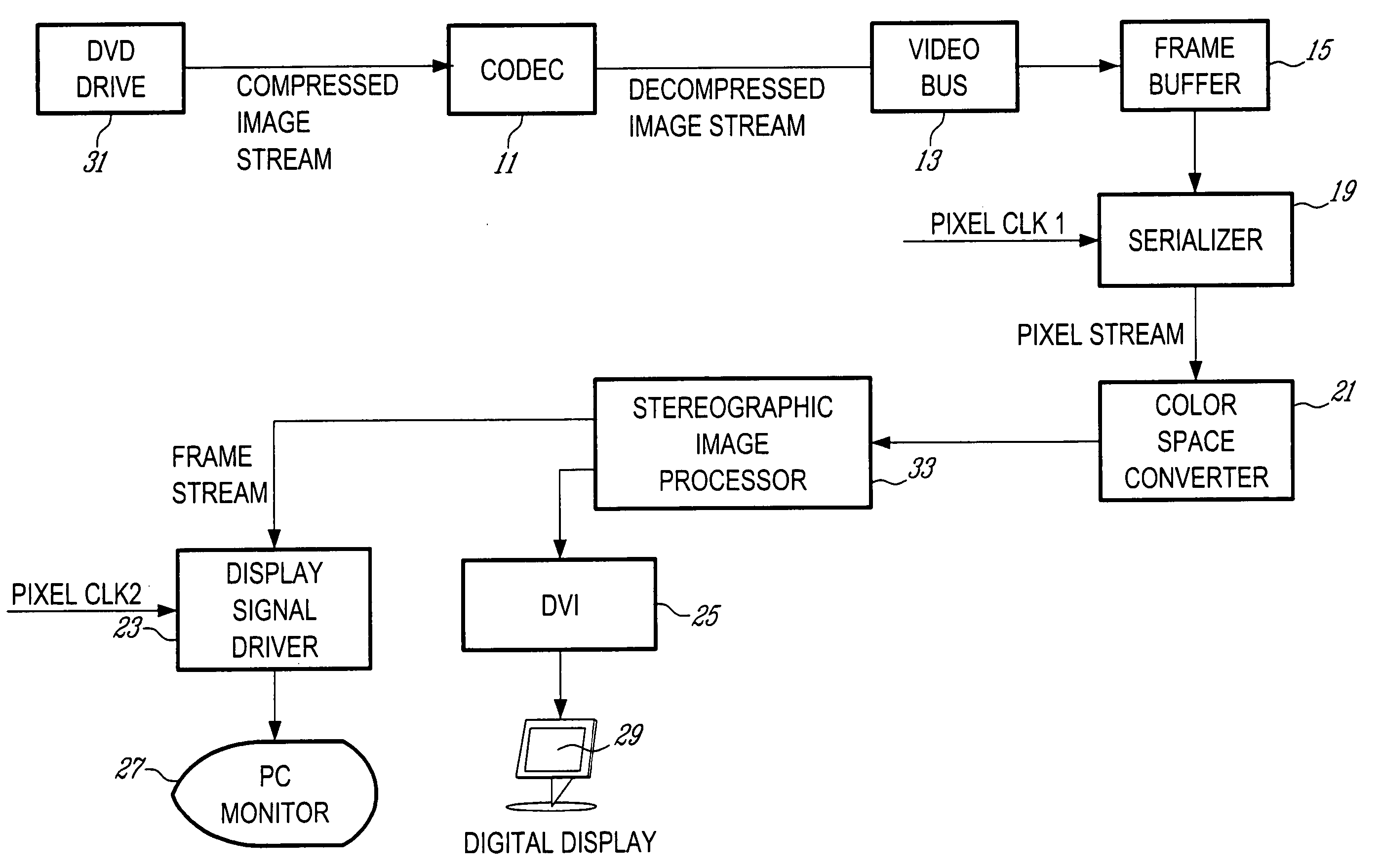Apparatus for processing a stereoscopic image stream
a stereoscopic image and apparatus technology, applied in the field of stereoscopic image processing apparatus, can solve the problems of fatigue and discomfort, poor image quality, and inability to integrate into even the most advanced home theatre system, and achieve the effect of high visual quality reproduction
- Summary
- Abstract
- Description
- Claims
- Application Information
AI Technical Summary
Benefits of technology
Problems solved by technology
Method used
Image
Examples
Embodiment Construction
[0040] With respect to FIG. 1, a block diagram of a prior art computer architecture system will now be described. In prior art systems, a received compressed image stream, received from a DVD reader 31, for example, is provided to a codec driver 11, for decompression. The codec driver 11 sends the decompressed image stream through the video bus 13 to a frame buffer 15. A serializing unit 19 reads pixels from the frame buffer and outputs into a pixel stream, at a rate given by a pixel clock. The pixel stream is received by a color space converter 21, which performs the necessary color space conversions, such that the pixel stream is in the appropriate display format. For example, in the case in which the pixel stream is to be output on a PC monitor 27, the pixel stream is in RGB format. The pixel stream is then, for example, either sent to a display signal driver 23 or to a DVI driver 25 to be formatted for display.
[0041] In one embodiment of the present invention shown in FIG. 2, T...
PUM
 Login to View More
Login to View More Abstract
Description
Claims
Application Information
 Login to View More
Login to View More - R&D
- Intellectual Property
- Life Sciences
- Materials
- Tech Scout
- Unparalleled Data Quality
- Higher Quality Content
- 60% Fewer Hallucinations
Browse by: Latest US Patents, China's latest patents, Technical Efficacy Thesaurus, Application Domain, Technology Topic, Popular Technical Reports.
© 2025 PatSnap. All rights reserved.Legal|Privacy policy|Modern Slavery Act Transparency Statement|Sitemap|About US| Contact US: help@patsnap.com



